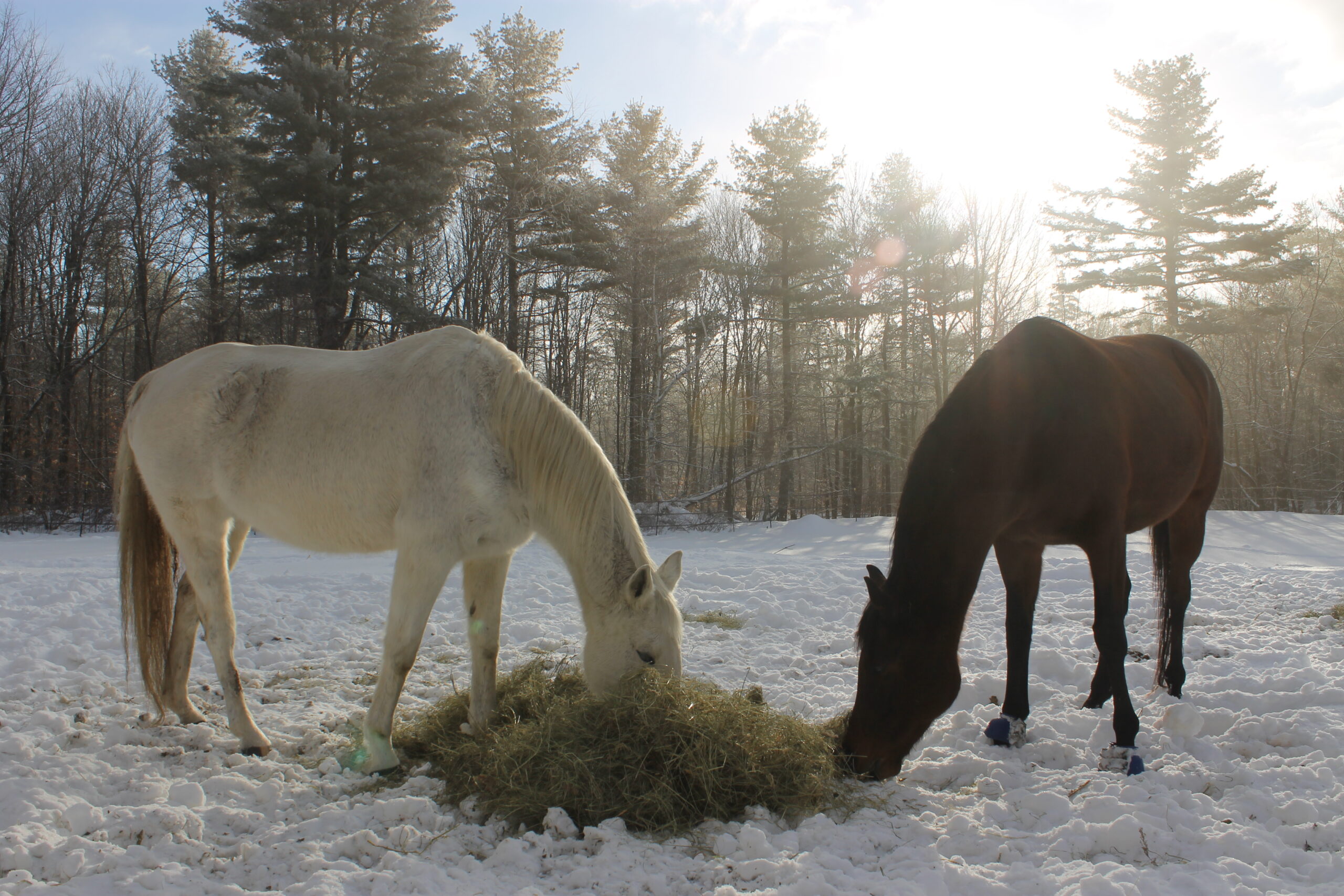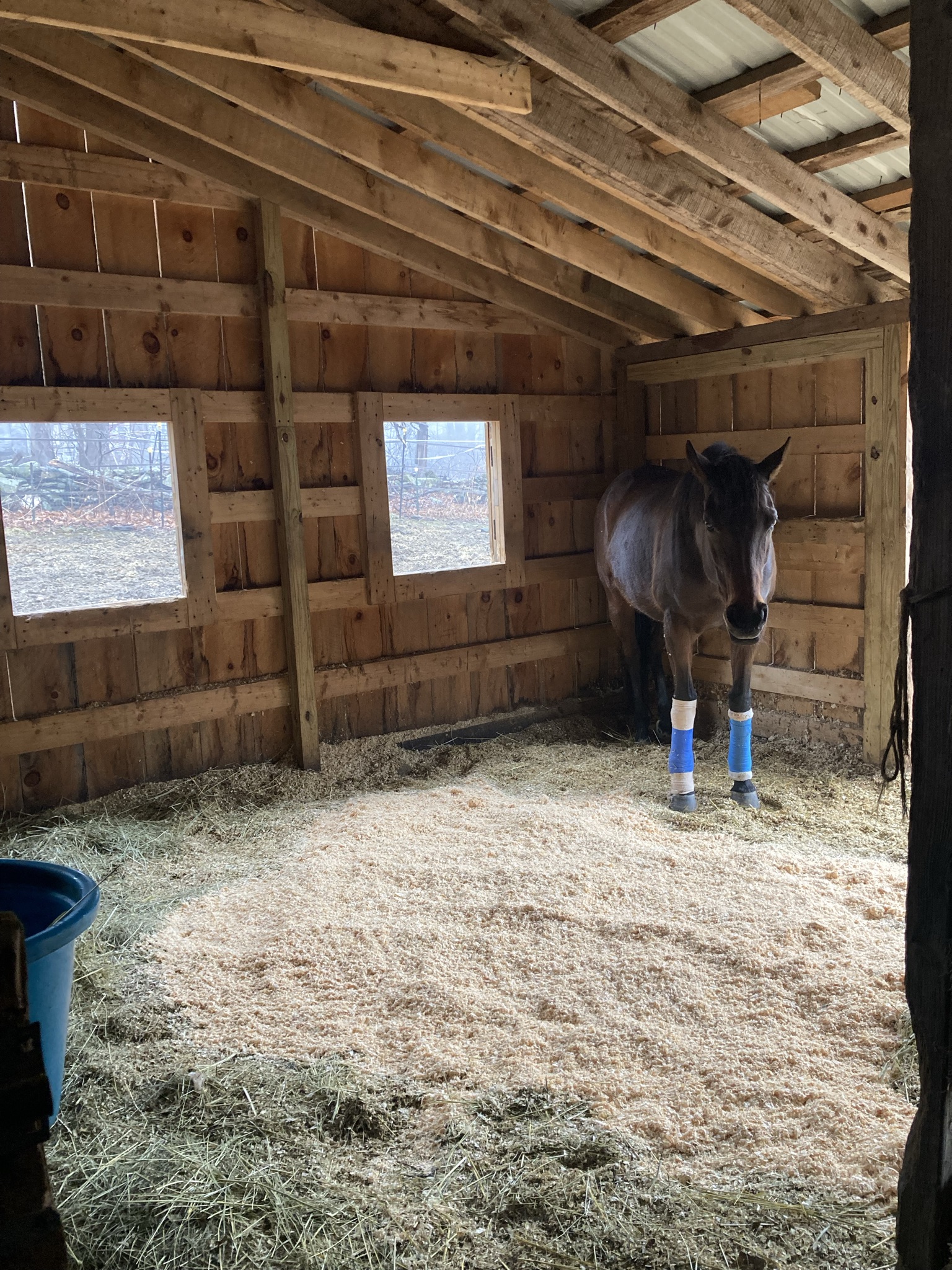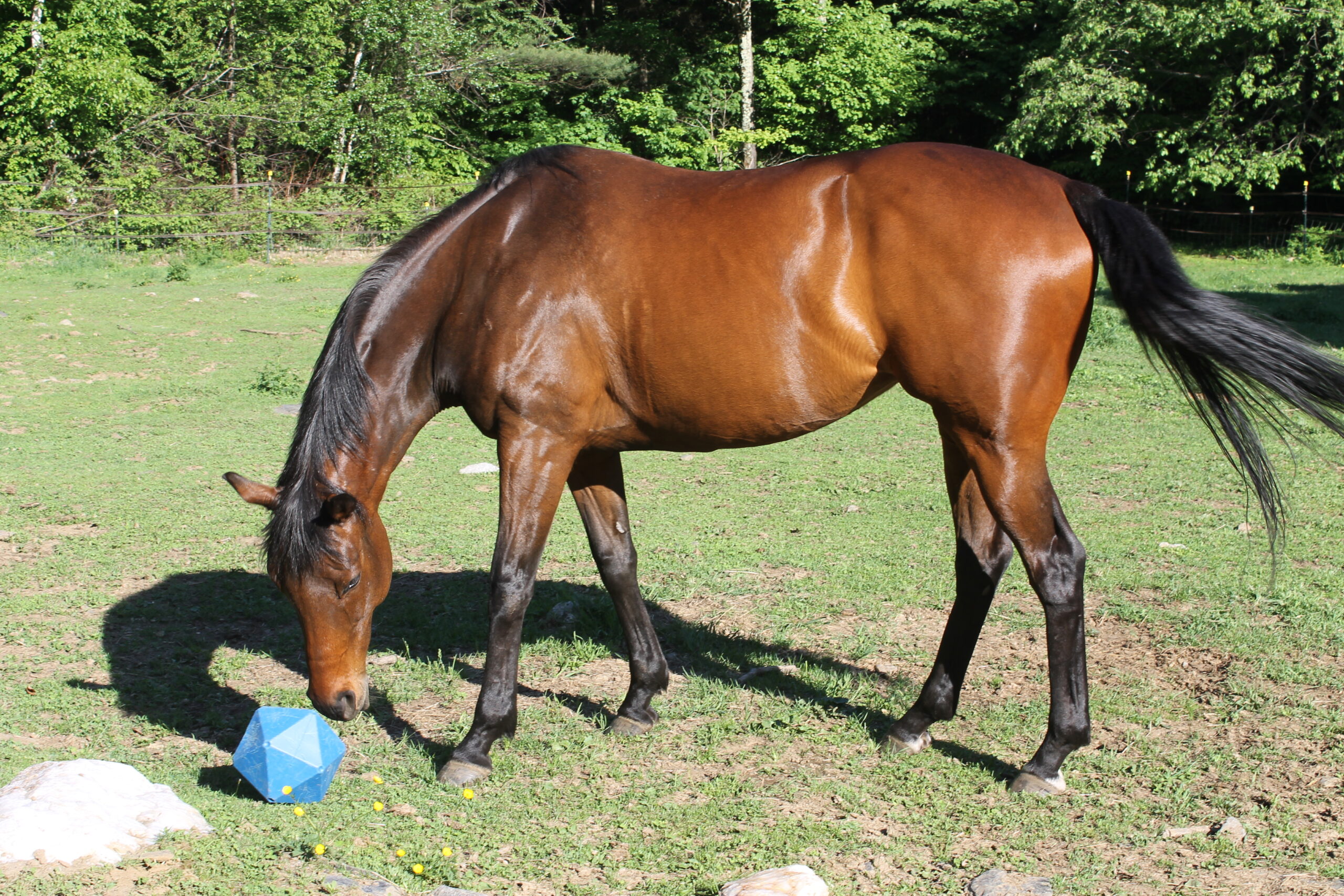A different kind of dream
- July 16, 2025
- ⎯ Paige Cerulli
I grew up as the horse-crazy girl whose family couldn’t afford horses. So, I turned to books to get my horse fix. From Black Beauty to The Black Stallion to the Saddle Club and Pony Pals series, I devoured stories about the remarkable bonds that can be forged with horses.
In the tales I liked best, neglected or cast-aside horses are rescued by young riders who can see the magic inside. Often, these stories culminated with the duo winning a prestigious race or competition.

These books made heroic achievements seem possible. But my dreams were simpler. I just wanted a horse of my own.
That dream became a reality when I was in college. My first horse was a gray Thoroughbred mare named Whisper. I adored Whisper, but four years after I bought her she was diagnosed with degenerative suspensory ligament desmitis (DSLD). She was retired at age 15.
I couldn’t afford a second horse until a few years later, when I bought my first home. The property had a small barn with run-in stalls, which the veterinarian had recommended for Whisper. Moving there did wonders for her mental and physical health.
A month or so after I settled into my new house, I saw an ad for a 5-year-old Thoroughbred mare at a local rescue. There stood my dream horse. A tall, well-built bay, the mare oozed class. The ad described her as levelheaded. Her name—Petite Warrior—seemed perfect for the adventures in competition that I had in mind. This mare, whom I re-named Lyric, would carry me into the show ring for the first time. We’d enjoy exploring trails together, and if I was brave enough, maybe we’d even do some hunter paces.
But during our third walk-trot ride, Lyric started limping. The lameness, while initially mild, started a seven-year journey to diagnose the problem. That journey continues today.
To make the saga short, Lyric hasn’t been riding sound since I adopted her. As things started to go wrong and I began to understand that this wasn’t going to be a simple solution, friends encouraged me to return her to the rescue. I’m far from rich, and while I’m fortunate to have a four-stall backyard barn, keeping an unrideable 5-year-old for the rest of her life is a large ask, both in terms of time and finances.

Lyric underwent surgery to replace a screw in her ankle, followed by 90 days of stall rest. Through it all, says Cerulli, “she behaved perfectly.” (Photo by Paige Cerulli)
Unrideable at age 5
But Lyric’s quiet disposition and fantastic manners had already won me over. She was family, and I couldn’t bear the thought of returning her to the rescue. I keep my horses for life. I decided that I had to try and fix her.
So began four years of examinations conducted by seven veterinarians, including two who specialized in lameness. An initial discovery promised some resolution: We determined that Lyric had sustained a condylar fracture five years before while in race training. Despite surgery to insert screws to stabilize the fracture, the injury had not fully healed.
Affecting the lower end (condyle) of the cannon bone where it meets the fetlock joint, condylar fracture is associated with high-speed work. It is most commonly seen in racehorses.
The experts recommended surgery. Though it wasn’t certain to restore Lyric’s soundness, I decided it was worth a try. Lyric had surgery to replace a lower screw in her ankle. She would be on stall rest for 90 days, which meant hand walking her for 10 minutes a day during the ice storms, snowstorms and winds that our Western Massachusetts winter brought. She behaved perfectly during her recuperation, and the bone healed.
Persistent and mysterious problems
Yet Lyric’s problems persisted and even got worse. She developed a lameness in her right hind leg that we’re still working to identify.
So far, nine veterinarians, a chiropractor and an osteopath have examined her. Nearly 200 radiograph films, countless nerve blocks, multiple ultrasounds, three rounds of shockwave therapy and even a bone scan still haven’t yielded answers or solutions.
Lyric has been tested for Lyme disease and equine protozoal encephalomyelitis (EPM). And I’ve adjusted her saddle and girth fit countless times. We’ve tried massage and PEMF (pulsed electromagnetic fields), and the latest high-tech lameness locating systems.
To make the process more heartbreaking, every veterinarian who sees Lyric tells me she’s close to being rideable, and they think they can find the underlying issue. So far, though, they have all failed.
For the last two years I have mourned the loss of the dreams I’d had for Lyric. She’s a beautiful mover in the rare moments when she’s sound. And she has the temperament to be a fantastic pleasure horse. With Lyric, I had thought I would finally fulfill my dreams of competing.
After every failed rehab, I found myself facing the reality that I still didn’t know what was wrong with Lyric, and that all my attempts to help her have been inadequate.
I also faced intense financial stress. As a freelance writer, I am a single-income household and my income fluctuates. Thankfully, my career also means I can take on additional work and save for Lyric’s veterinary bills.
Rethinking horse ownership
As a child, I was so in love with horses that I didn’t care if I didn’t get to ride. I just wanted to be in their presence, so I would happily muck stalls, clean paddocks, clean tack—whatever it took for me to spend extra time in and around the barn. I was perfectly content hand grazing my favorite pony, and time in the saddle was just a bonus.
That changed when I became an adult and I started to focus on improving as a rider. Riding time became more valuable, especially when I was boarding Whisper.
Lyric’s lameness made me rethink that and prompted me to revisit ways to enjoy my time with her from the ground.
I’ve had to create new dreams for her. We participated in a walk-only in-hand dressage class, and Lyric ended up as the overall high-point horse for the entire show. We’ve done some virtual in-hand halter classes, conducted using photo entries. I’ve experimented with 10- minute bareback rides at the walk, which Lyric seems to enjoy. And I’ve begun a bit of trick-training—tell Lyric to “Say cheese” and she’ll lift her upper lip and reach out toward you with a toothy horse smile.
Liberty training

“I still see horses as magical but I’ve also come to face
the hard, often heartbreaking reality that life with them entails,” says Paige Cerulli. (Photo by Paige Cerulli)
Most recently, we’ve ventured into liberty training, which seems to be Lyric’s forte. She’s highly observant and focused, so she learned to mirror me naturally and quickly. Our routines will never move past the walk, so we can’t enter the virtual liberty competitions available, but it does give us something to work on together.
I haven’t given up—not entirely. At this point I don’t believe Lyric will ever be riding sound. But her lameness is worsening, so I continue to pursue a diagnosis, if only to make her more comfortable and mentally prepare myself for the possibility that someday we may need to free her from a life of pain.
In accepting that Lyric won’t be rideable, I’m creating my own sort of closure. I’m letting myself mourn those dreams I had for her. Lyric is, by far, the best horse I’ve ever ridden. She is beautiful and talented and has an incredible desire to do whatever I ask of her. It’s hard to imagine what she could accomplish were she physically sound. And it’s gutting to see glimpses of her athleticism in the pasture while knowing how broken she actually is.
No storybook ending
The horse world loves an underdog story, possibly because the reality is so devastating when things don’t work out. You can see it in the books we read as children and teens, depicting girls coaxing horses who are spiritually and physically broken back to health. As adults, we encounter countless stories of champions found in kill pens and of failed racehorses who go on to become four-star eventers and top showjumpers.
Through them all, there’s this underlying message that if you put enough time and love and care into a horse, you can transform it. Fewer stories center on the horses who couldn’t be fixed. About the owners who sought second, third, fourth and fifth opinions and who ran out of funds before a diagnosis was made. Or about the horses who sustained career-ending injuries before their careers even began. About the horses whose only achievement would be to become pasture ornaments.
Making peace
While I’m trying to make peace with the situation, that’s easier some days than others. Though I now largely think of Lyric as permanently retired, I still catch myself fantasizing about one day being able to again ride her canter—that lovely, lofty gait that once seemed so easy for her. But fairy-tale endings are rare.
I still see horses as magical. But I’ve also come to face the hard, often heartbreaking reality that life with them entails.
Part of me longs to return to the days of my childhood innocence, when I read books about fixing the unfixable horse with love, patience and dedication. And while I’m grateful to see Lyric grazing when I look out my window, that gratitude is tinged with the worry that, no matter how hard I try, I won’t be able to write a different ending to her story.





